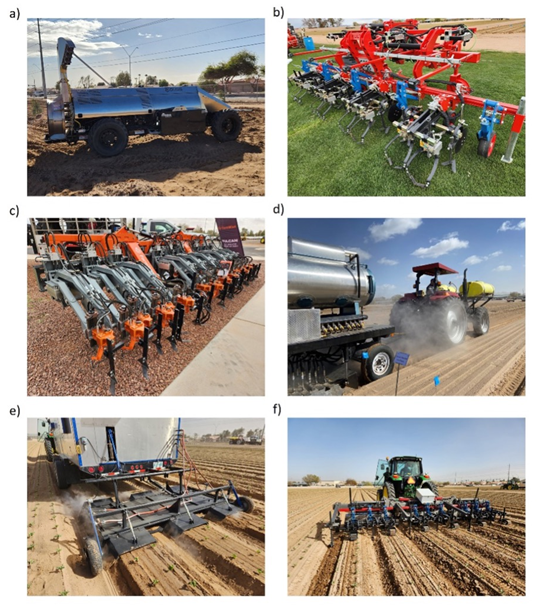-
Jun 14, 2017Cultural Control of Whiteflies During the SummerThe first line of defense in avoiding whitefly issues in the fall produce/melon plantings is for PCAs and growers to be vigilant in controlling whiteflies this summer. To a large extent this means effectively avoiding large populations in cotton, a major source of whiteflies on fall produce and melons crops. But before whitefly management begins in cotton, it is important that whitefly populations be prevented from building up to large numbers in the spring melons that have recently finished, or are nearing completion of harvest in the next few weeks. Although whitefly numbers appear to be relatively lighter this spring than normal, adult numbers have increased significantly over the past week in melons coinciding with higher temperatures and area-wide melon harvests. Growers and PCAs should not hesitate to knock these populations down with a timely insecticide application on pre-harvest melons. Not only does this prevent sooty mold contamination, but also reduces the potential numbers of adults that might migrate to adjacent crops and weeds. The high temperatures that are expected in the next week or so may allow whitefly nymph populations to rapidly build-up and cause honeydew/sooty cold contamination on fruit. Once harvest is complete, proper sanitation in spring melons is critical for preventing unnecessary whitefly migration into cotton and alfalfa. It is highly recommended that melon growers quickly destroy crop residue as soon as possible following harvest. A delay in disking under melon fields following harvest can allow adult whiteflies to readily disperse into cotton and alfalfa, especially if they don't need to fly very far. My observation this spring has been that the majority of melon fields have been gown in close proximity to cotton. These spring melons fields are can also potentially extend the host-acquisition period for Cucurbit Yellows Stunting Disorder Virus (CYSDV). Once melons fields have been disked and flat-watered, it is common for volunteer melons to germinate and emerge during July and August. The destruction of volunteer melons before fall crops are established can reduce the source of whiteflies and virus inoculum available to infect newly emerging melon plants. Volunteer plants should be destroyed as soon as practical. This can be done by disking or applying a contact, burn-down herbicide to fields. Recent research has indicated that fall melons grown near spring melons with volunteers (<1.8 miles) are at a high risk of CYSDV infection. Ideally, it is in the Ag communities best interest to use sound cultural management practices, such as sanitation, to eliminate and avoid unnecessary sources of whiteflies before the fall produce and melon seasons begin. For more information on cultural management practices for whiteflies see: Insect Management on Desert Melons: Whiteflies.

 In response to the recent outbreaks of Diamondback moth (DBM) , Plutella xylostella in Yuma, we have established a pheromone trap network designed to monitor the activity and movement of adult populations of DBM. PCAs have had difficulty controlling DBM in cabbage, broccoli and cauliflower since October. Traps have been placed in Roll, Wellton, Dome Valley, Gila Valley and Yuma Valley in locations where cole crops are presently being grown or in areas where infestations were known to occur this fall.
In response to the recent outbreaks of Diamondback moth (DBM) , Plutella xylostella in Yuma, we have established a pheromone trap network designed to monitor the activity and movement of adult populations of DBM. PCAs have had difficulty controlling DBM in cabbage, broccoli and cauliflower since October. Traps have been placed in Roll, Wellton, Dome Valley, Gila Valley and Yuma Valley in locations where cole crops are presently being grown or in areas where infestations were known to occur this fall. To contact John Palumbo go to: jpalumbo@ag.Arizona.edu
To contact John Palumbo go to: jpalumbo@ag.Arizona.edu










